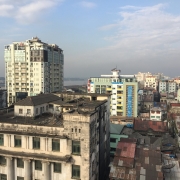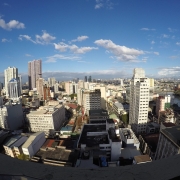What is the ASEAN Way?
Topic of Study [For H2 History Students]:
Paper 2: Regional Conflicts and Co-operation
Source Based Case Study
Theme III Chapter 2: ASEAN (Growth and Development of ASEAN : Building regional peace and security)
What is the ‘ASEAN Way’?
The ASEAN Way is a guiding principle that shapes the approach of member nations in Southeast Asia for conflict management. It emphasises heavily on consultation and consensus-building, which later inspired the introduction of other forms of political co-operation, like the Treaty of Amity and Co-operation (TAC).
As pointed out by the former Secretary-General of ASEAN, Rodolfo Severino, in a public address, the ASEAN Way “has served Southeast Asia well” by “moving its members from animosity to the close co-operative relationship that they enjoy today”.
Origins of the ASEAN Way
Following the formation of the regional organization in 1967, member nations had to learn from past errors as well as on-going disputes. One such incident involved the “Corregidor affair” (1968), which broke out due to the territorial disputes over Sabah. Similarly, the Confrontation (Konfrontasi) of 1963 was a contentious issue that strained diplomatic relations between affected member nations. Therefore, the ASEAN Way was implemented to encourage the use of diplomacy rather than forceful means to resolve conflicts.
Interestingly, the ASEAN Way was inspired by Malay culture, seen in terms of musjawarah (consultation) and muafakat (consensus-building). This practice involves a gradual decision-making process, in which all member states must be consulted before the regional organization can come to a consensus on the possible course of action to undertake.
How does it work?
One of the core principles of ASEAN Way involves the ‘principle of non-interference’. Should one or a few member nations disagree with the proposals put forth during the ASEAN meetings, the organization must postpone the decision-making for future settlement.
The main purpose of this cautious approach is to provide adequate time for considerations and prevent the outbreak and escalation of tensions. Therefore, regional stability can be maintained.
Subsequent impacts on ASEAN’s political framework
Following its inception in the 1960s, ASEAN has evolved over time in response to the changing international climate. The ASEAN Way was implemented in the form of institutionalized forms of co-operation.
One such example is the Zone of Peace, Freedom and Neutrality (ZOPFAN) Declaration (1971). Against the backdrop of the Cold War, these Southeast Asian member nations asserted a firm position to be free from external interference to prevent ideological manipulation.
Another application is observed in the Treaty of Amity and Co-operation (TAC) that emphasises heavily on amicable co-operation among member nations and non-ASEAN countries. The TAC endorses the practice of cautious diplomacy that focuses on the compartmentalization of contentious issues.
The most important case study that can be used to examine the significance of the ASEAN Way is the Third Indochina War (1978-1991) as it arguably provided a timely opportunity to display ASEAN’s solidarity to the rest of the world.
What can we learn from this article?
Consider the following question:
– Assess the success and limitations of the ASEAN Way in managing regional conflicts in Southeast Asia since 1967 [to be discussed in class].
Now that you have examined the fundamental concepts of the ASEAN Way, it is imperative that you explore and attempt source-based case study questions. You can also consider signing up for our JC History Tuition to find out how you can apply your knowledge to answer similar questions that are based on past examination papers.
The H2 and H1 History Tuition feature online discussion and writing practices to enhance your knowledge application skills. Get useful study notes and clarify your doubts on the subject with the tutor. You can also follow our Telegram Channel to get useful updates.
We have other JC tuition classes, such as JC Math Tuition and JC Chemistry Tuition. For Secondary Tuition, we provide Secondary English Tuition, Secondary Math tuition, Secondary Chemistry Tuition, Social Studies Tuition, Geography, History Tuition and Secondary Economics Tuition. For Primary Tuition, we have Primary English, Math and Science Tuition. Call 9658 5789 to find out more.










